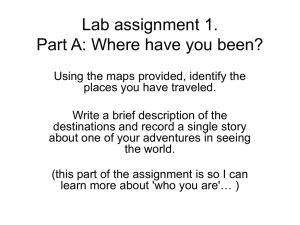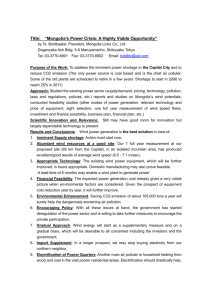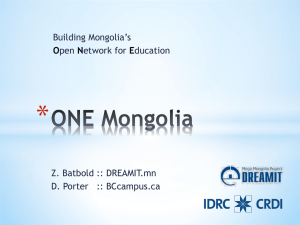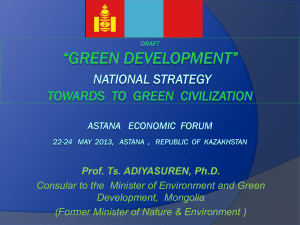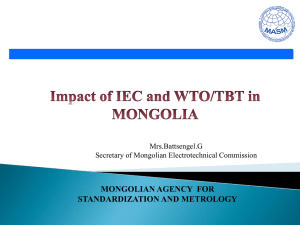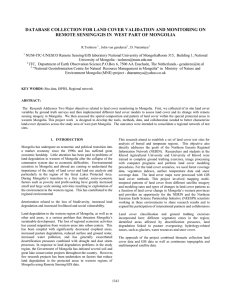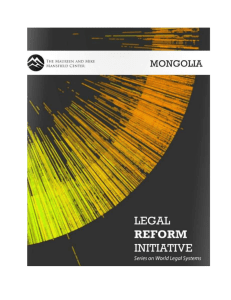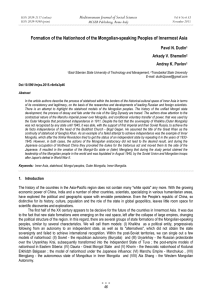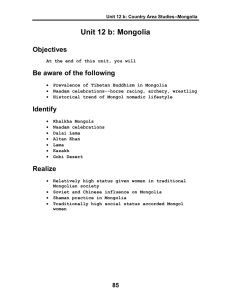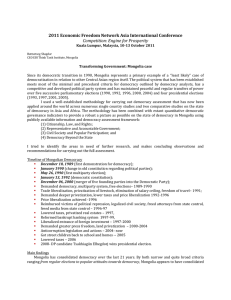Current Status and Issue of e
advertisement
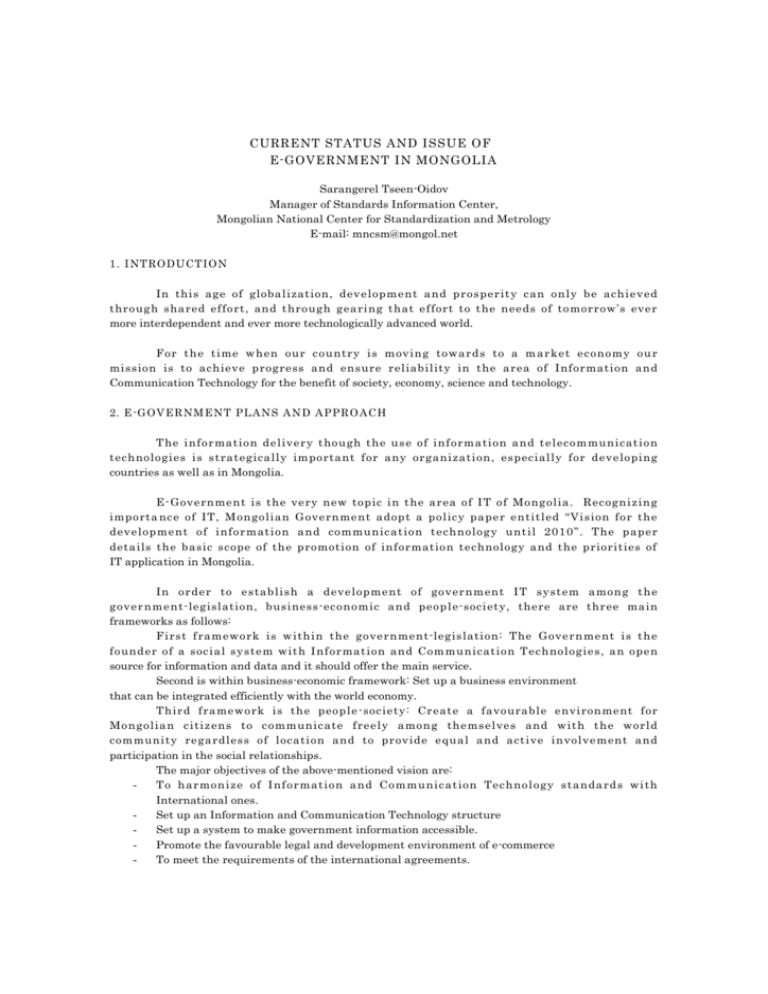
CURRENT STATUS AND ISSUE OF E-GOVERNMENT IN MONGOLIA Sarangerel Tseen-Oidov Manager of Standards Information Center, Mongolian National Center for Standardization and Metrology E-mail: mncsm@mongol.net 1. INTRODUCTION In this age of globalization, development and prosperity can only be achieved through shared effort, and through gearing that effort to the needs of tomorrow’s ever more interdependent and ever more technologically advanced world. For the time when our country is moving towards to a m arket economy our mission is to achieve progress and ensure reliability in the area of Information and Communication Technology for the benefit of society, economy, science and technology. 2. E -G O V E R N M E N T P L A N S A N D A P P R O A C H The information delivery though the use of information and telecommunication technologies is strategically important for any organization, especially for developing countries as well as in Mongolia. E-Government is the very new topic in the area of IT of Mongolia. Recognizing importa nce of IT, Mongolian Government adopt a policy paper entitled “Vision for the development of information and communication technology until 2010”. The paper details the basic scope of the promotion of information technology and the priorities of IT application in Mongolia. In order to establish a development of government IT system among the government-legislation, business-economic and people-society, there are three main frameworks as follows: First framework is within the government-legislation: The Government is the founder of a social system with Information and Communication Technologies, an open source for information and data and it should offer the main service. Second is within business-economic framework: Set up a business environment that can be integrated efficiently with the world economy. Third framework is the people -society: Create a favourable environment for Mongolian citizens to communicate freely among themselves and with the world community regardless of location and to provide equal and active involvement and participation in the social relationships. The major objectives of the above-mentioned vision are: To harmonize of Information and Communication Technology standards with International ones. Set up an Information and Communication Technology structure Set up a system to make government information accessible. Promote the favourable legal and development environment of e-commerce To meet the requirements of the international agreements. Information and Communication Technology (ICT) is an evolving technology. Unlike other resource hungry technology and tools for development, the ICT has big potential for the resource-pool developing countries to harness its power. If our country, Mongolia could take systematic approach to use the ICT for our development, it could stop the vicious cycle of underdevelopment and break away from the core-periphery exploitative relationships. For support and enhance the government information system is need to increase office hi-tech supply and develop a government information network together with public, non-governmental and private sector information networks. 3. IT DEVELOPMENTS Information and Telecommunication Technologies is very important to all nations in the world. MNCSM is central standards and metrology body responsible for coordinating and managing Metrology, Standardization, and Testing and Quality management sector of Mongolia. MNCSM is a government regulatory agency, running under the Ministry of Trade and Industry of Mongolia. MNCSM gives priorities for the implementation of International IT standards and application of Information and Telecommunication Technologies. For the application ICT, we set up a local area network (LAN) with 80 PC’s and 1 server computer. All PC’s connected with LAN and 40 PC’s connected with the Internet through dail-up connection. IT developments concern to the following aspects: E-mail Electronic templates and forms Document exchange formats (including graphics) Websites ISODOC server and ISO TC server Electronic balloting Electronic delivery of standards Workflow technologies 4. REQUIREMENTS FOR DOCUMENTATION STANDARDS MNCSM is responsible for development and approval of documentation and IT standards. Reducing the ti me taken to develop standards has become a key strategic issue. One of the areas for improvement by the ISO is the time-consuming process of gathering votes and comments from ISO’s membership on standards. From first half of this year, ISO member countri es were given access to electronic balloting system for international standardization work. E-balloting is one component of a large-scale project to migrate the entire ISO standards-development process-from the proposal of new work items to the publication of standards – to a wholly electronic environment. In order to support developing countries in IT area, MNCSM is looking for a technical assistance for the establishment of direct (not dial -up) connection network system with ISONET and the World Standards Service Network (WSSN). Without the Internet connection and communication, there is no way to forward to the future. 5. CONCLUSION We need to study a lot from developed country’s experience and practice and support. A large number of developing countries are currently heavily dependent on imports of service. The import of service is today closely linked with the ability of financial, computer, information and communication services. Most crucial points for IT standardization in Mongolia are lack of financial resources, lack of special trained experts and lack of international experiences. Therefore, the regional collaboration in standardization may be regarded, as the very first requirement in exchange the latest technical information, documents and technology transfer, training seminar like AFSIT. Mongolia is open for any bilateral and multilateral cooperation in the field of IT standardization and related activities. Thank you very much for your kind attention.
